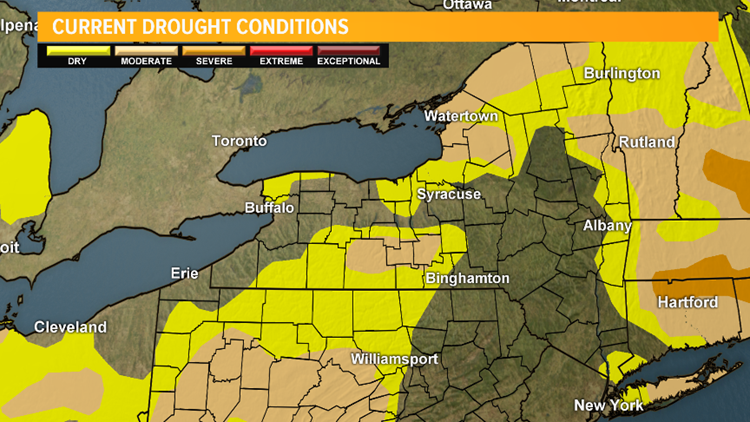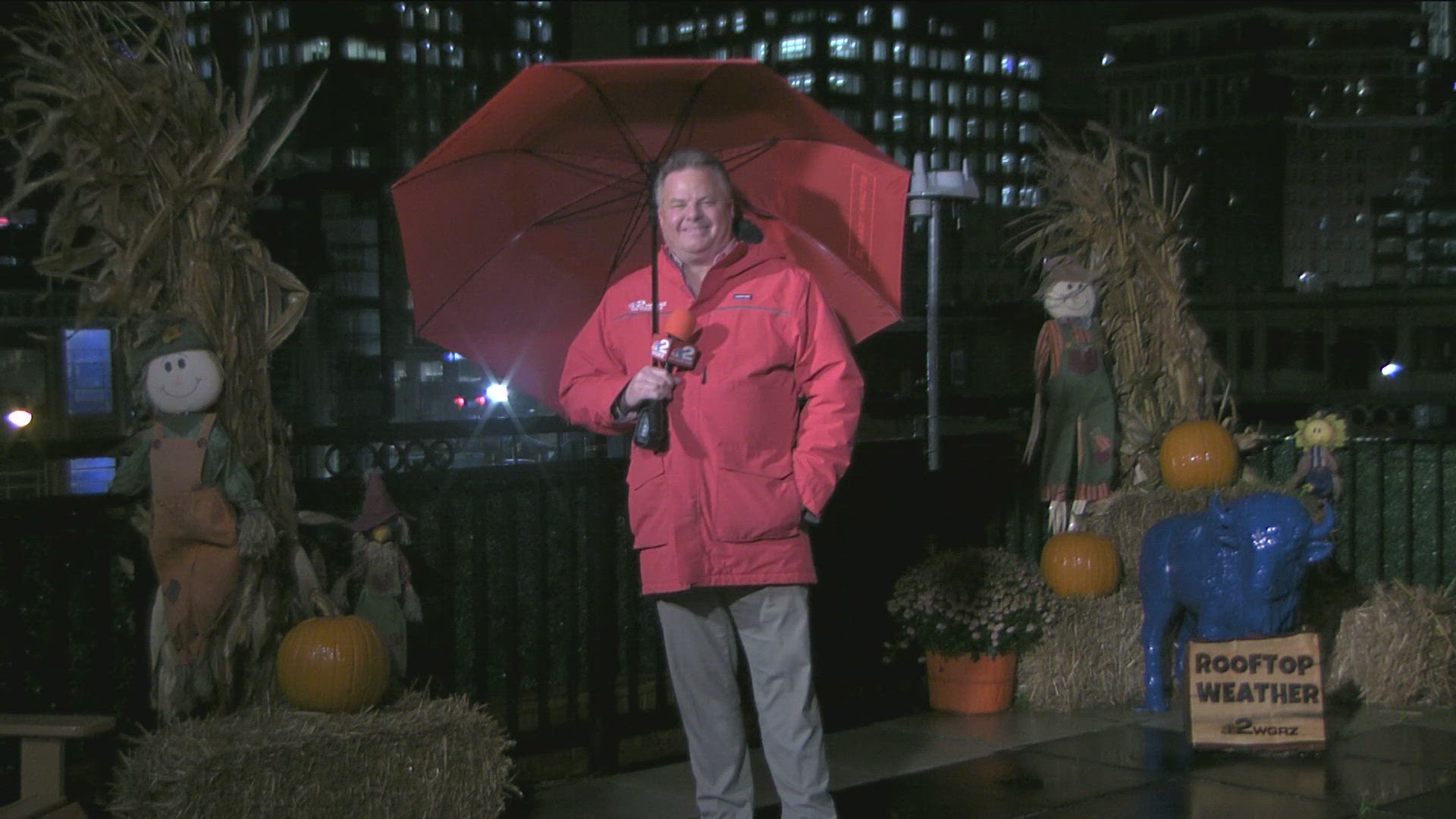BUFFALO, N.Y. — The entire state of New York has seen an increase in drought, or drought-like, conditions in the latest update released Thursday.
For Western New York alone, this includes an increase in areas with the definition of "abnormally dry" soil moisture levels. Now, eastern Grand Island and northern Erie County has this definition, which is in addition to both the Southern Tier and Niagara Frontier, both of which have already had that definition.
McKean and Potter counties were also included in Pennsylvania's update, leaving only two counties in the Western New York region without any impacts.
New York State is almost back to where it was two weeks ago. Just over 72 percent of the state is being impacted, with 53.8 percent having abnormally dry soil and 19.3 in a moderate drought. This totals to over 1.8 million New York residents who are currently experiencing a drought.
As of August 22, Western New York is behind in monthly rainfall by half an inch to an inch and a half. To prevent any drought conditions from getting worse, the region will need to see at least another half an inch to an inch by the end of August, preferably two to three inches to swing things in the other direction.
Unsettled weather at the end of next week could be a good thing though, even if it means a few more rainy days. With two tropical systems headed towards the Gulf of Mexico next week, tropical rains could move into the Ohio River Valley and as far as the Great Lakes and Northeast before the month is done.
The biggest change added in the weekly update was the upgrade to a moderate drought for several counties in Central New York, where the region has been lacking in substantial rainfall since tropical storm Isaias moved through at the beginning of August.
On the flip side, drought conditions in the Adirondacks and specifically St. Lawrence County should continue to see an improvement in their drought conditions as a stagnant, wet weather pattern takes hold.



